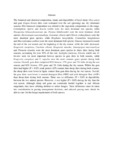| dc.description.abstract | The botanical and chemical composition, intake and digestibility of local sheep (Ovis aries) and goat (Capra hirtus) diets were evaluated over the wet (growing) and dry (dormant) seasons. Diet botanical composition was related to the vegetation composition on the range. Commiphora riperia and Acacia tortilis were the most dominant tree species, while Duosperma kilimandscharicum and Premna hildebrandtii were the most dominant shrub species. Enteropogon macrostachyus, Cenchrus ciliaris and Chloris roxburghiana were the most abundant grass species, while Brepharis integriifolia, Commelina benghalensis and Macrotylomma axillare were the most dominant forb species. Grasses increased towards the end of the wet season and the beginning of the dry season, while the forbs decreased. Eragrostis caespitosa, Cenchrus ciliaris, Eragrostis superba, Enteropogon macrostachyus and Themeda triandra were the most dominant grass species in sheep diets during both seasons, accounting for over 82% of the diet. Acalypha fruticosa, Grewia similis and G. bicolor were the most important browse species in goat diets in both seasons, while Eragrostis caespitose and E. superba were the most common grass species during both seasons. Overall, goat diets comprised 81% browse, 17% grass and 2% forbs during the wet season; and 82% browse, 15% grass and 3% forbs during the dry season. Whilst the goat diets had higher (P < 0.05) crude protein (CP) content than sheep diets during both seasons, the sheep diets were lower in lignin content than goat diets during the wet season. Overall, the goat diets were lower in neutral detergent fibre (NDF) and acid detergent fibre (ADF) than sheep diets during both seasons. There was no difference (P < 0.05) in digestibility between the two animal species. However, it was higher (P < 0.05) during the dry than the wet season. Although sheep and goats are commonly herded together in east African rangelands, they have differing abilities to utilise forages. These differences must be taken into consideration in grazing management decisions, and selected grazing areas should be able to cater for the forage requirements of both species. | en_US |

